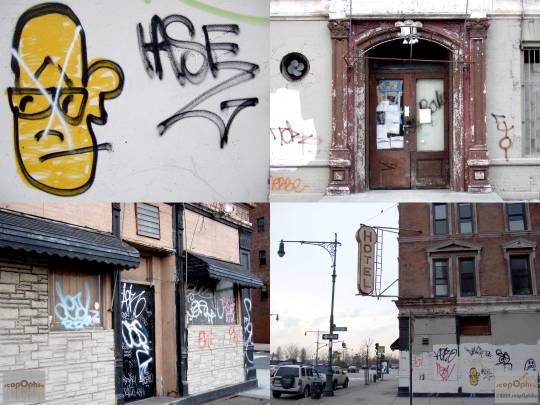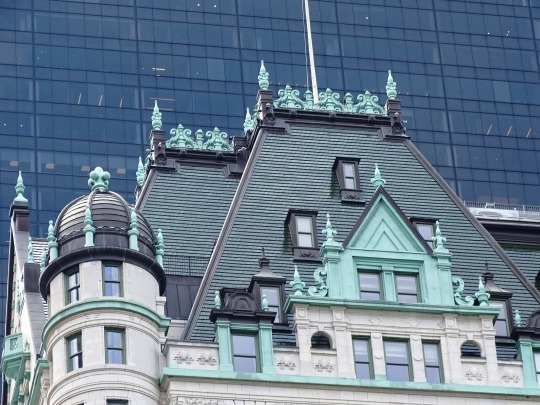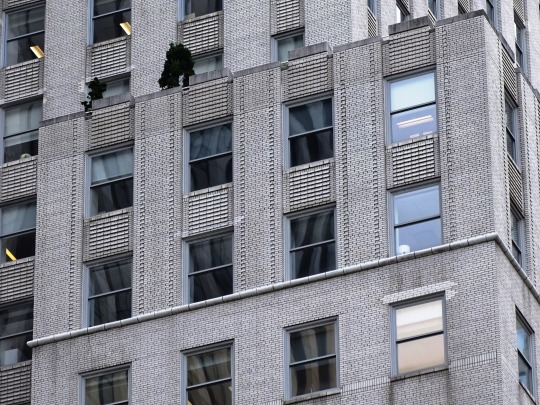#Manhattan Hotel
Explore tagged Tumblr posts
Text
#us department of justice#united states#migrants#new york city#migrant shelters#names of migrant residents#manhattan hotel#a list of full names of aliens currently residing a the site
1 note
·
View note
Text

scopOphilic_micromessaging_1322 - scopOphilic1997 presents a new micro-messaging series: small, subtle, and often unintentional messages we send and receive verbally and non-verbally. (2011)
#scopOphilic1997#scopOphilic#digitalart#micromessaging#streetart#graffitiart#graffiti#Manhattan#nyc#photographers on tumblr#original photographers#ArtistsOnTumblr#2011#CHANGE#Young Democratic Socialst Conference#erocksny#203#They decided tolose me as a customer.Alright. I open my own hotel. Eat there.#blackandwhite
76 notes
·
View notes
Text
My local cinema has started playing Conclave again (real time marketing) and I’m nothing if not a matron of the arts so I went to see it for the second time.
That second watch revived my affection towards Ralph Fiennes and turned it into a full-blown obsession. I’m currently 10 movies deep into rewatching his filmography. I’m having a wonderful fucking time.
#ralph fiennes#conclave#conclave 2024#in bruges#grand budapest hotel#maid in manhattan#constant gardener#quiz show
47 notes
·
View notes
Text
Big banks spent money for suspicious projects in Pakistan, and then got paid back with US tax dollars using a Pakistan owned building in Manhattan hosting illegals...

#money laundering#grifters gonna grift#usaid fraud#usaid#usaid funding freeze#roosevelt hotel#manhattan#close the border#drain the swamp#f*ck illegals#go home
55 notes
·
View notes
Text

The Chelsea Hotel <3
#aesthetic#photography#photoblog#pinterest#beautiful photos#aesthetic pinterest#this is a girlblog#just girly things#girlblogging#welcome to new york#new york city#new york#grace burns#patti smith#chelsea hotel#chelsea#manhattan#hotel#travel#traveling#city photography#city life#city streets#city scene#poetic#poetry#just kids patti smith#m train Patti smith
31 notes
·
View notes
Text

Plaza Hotel. Grand Army Plaza and W. 58th Street. New York, Manhattan. Circa 1907. "
Phoro: Detroit Publishing Company.
View full size
64 notes
·
View notes
Text

Clocktower penthouse in Brooklyn
#photos#photography#travel#manhattan#brooklyn#new york#architecture#architectdesign#design#interior#interiors#interior design#rooms#room#hotel#hotels#new york city#nyc#travelling
36 notes
·
View notes
Text

Sheraton Corp, 1954
#Park Sheraton Hotel#1954#ad#New York City#vintage#mid-century#advertisement#midtown#The Mermaid Room#supper club#Manhattan#1950s#midcentury#illustration#advertising#night#glamorous#air conditioning#television#mid century
80 notes
·
View notes
Text

The Knickerbocker Hotel (then used as an office building), on the SE corner of Broadway and 42nd Street, 1921.
Built by John Jacob Astor, it was once home to Enrico Caruso and George M. Cohan. Other residents and guests included Geraldine Farrar, F. Scott Fitzgerald, and D.W. Griffith. Tammany Hall politicians used to hold political meetings there. The popular hotel bar was called "The 42nd Street Country Club" and the restaurant was allegedly where the velvet rope line was invented.
The hotel opened in 1901 and flourished, but it was hit hard by Prohibition and was repurposed as an office building in 1920. It reopened as a hotel in 2015.
Photo: Bettmann Archive/NY Daily News
#vintage New York#1920s#Hotel Knickerbocker#Knickerbocker Hotel#1910s#1900s#NYC landmarks#vintage Manhattan#vintage NYC
149 notes
·
View notes
Text

Gansevoort Hotel ^2 - West Village, New York City by Andreas Komodromos
#facade#building exterior#hotel#modern#nyc architecture#manhattan#city#nyc#cityscape#new york#travel#urban#new york city#nyandreas#architecture#tumblr photographer#urban architecture#architettura
12 notes
·
View notes
Text
THAT MOVIE WAS SO GOOD AND WE'RE NOT EVEN DONE WATCHING IT AAAAAAAAAAAAAA
#UM OK IM RLLY EXCITED RN CUZ IT REMINDED MEOF STEVAIDE GNNGNGNGNNNJ#our teacher made us watch a movie for housekeeping class. she wanted us to point out thr good and bad things they did in the hotel#what i didn't know about this movie was that there's a romantic plot HSHDHDHDHDHS ITS A HOTEL MOVIE I WOULDN'T KNOW THAT#ITS SO FUCKING GOOD IT'S CALLED MAID IN MANHATTAN BUT WE RAN OUT OF CLASS HOURS TO FINISH IT....#ITS SO GOOD FUCK AAAAHGHJJ#so there's this maid in the hotel named marisa shes very hardworking and shes very. no nonsense kinda woman#there was this one diva customer who asked for a favor from her (said she seemed reliable for the job) and it was about returning these#expensive clothes back to a boutique. marisa WAS gonna do that but her coworker became nosy on the dress and shes like#omg bestie u gotta wear this. the diva doesn't need it anymore WEAR IT WEAR IT and while marisa was AGAINST IT. she was forced to wear it#shit happens. she is (while wearing the dress) was found by this dashing rich politician who fell in love with her#not only was she pretty but he ADORED her firm attitude and wanted to know her better (MUCH TO HER DISMAY)#there was one piece of dialogue where she snapped back at him harshly BUT ALL HE DID WAS SMILE LIKE daaamn... that's a woman after my heart#UMMMMM UMM STEVAIDE UNMMM#ITS AO GOOD I WANNA FINISH THE MOVIE WHEN I GET HOME EEEEEE#THE WHOLE CLASS KNEW THE VIBE AND EVEN I WAS GOING A LIL CRAZY LMAO#ouydgghug ouhh i miss movie times at school grgrrr
8 notes
·
View notes
Text
Stomach Book Live at Market Hotel 6/21/25












Support a negro or stay silent on todays political climate pussy.
Follow @/catnipspliff on Insta for exclusive content + this and other socials for when I'll post my videos and animations instead of video stills edited lmfao. Finally taking the making.. Or at least starting a portfolio seriously at this stage.
.
.
.
#furry#furries#mkultra#girls rituals#deviantart#experimental#small woman#stomach book#fukona girl#market hotel#nyc#nyc photography#new york#manhattan#punk furry#my edit#my photos#video still#hound dog#haitian art#woof woof#bark bark woof grrr#dogs#coyote#hyperpop#soundcloud#edm#club#club penguin#loltaggingshitforfunatp
3 notes
·
View notes
Text

scopOphilic_micromessaging_962 - scopOphilic1997 presents a new micro-messaging series: small, subtle, and often unintentional messages we send and receive verbally and non-verbally.
Keller Bar (1956-1998 as it looked at the end of Christopher street in 2007.)
#scopOphilic1997#scopOphilic#digitalart#micromessaging#streetart#graffitiart#graffiti#Manhattan#nyc#photographers on tumblr#original photographers#ArtistsOnTumblr#West Village#2007#Barrow Street West Street#Christopher Street#Kellers#HSE#Kellers Hotel#yellow#black#brown#red
67 notes
·
View notes
Text










Doors, Gates and Windows (No. 83)
Bergdorf Goodman, NYC (five pics)
Crown Building, NYC (two pics)
Plaza Hotel, NYC
Squibb Building, NYC (two pics)
#745 Fifth Avenue#Art Deco#Bergdorf Goodman#travel#original photography#vacation#tourist attraction#landmark#cityscape#architecture#detail#façade#door#window#exterior#summer 2019#USA#Manhattan#New York City#Crown Building#Plaza Hotel#Squibb Building
12 notes
·
View notes
Text

4 notes
·
View notes
Text

28 notes
·
View notes